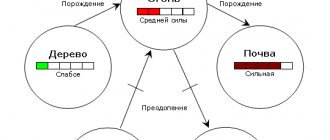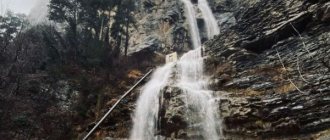What is a waterfall
A waterfall is a powerful fall of water from steep cliffs that are located across a river or stream. Water streams create a picturesque landscape, quickly descending along numerous ledges. A powerful and wide waterfall is also called a cataract. Those objects that fall hollowly are waterfall objects.
The geography of these natural sites is vast. They are found in almost every state. What is surprising is that most of the large specimens are found in two or three countries.
- Venezuelan Angel is the tallest in the world. Its height is 979 m. The entire volume of water cannot reach the ground and becomes like fog. Every year thousands of tourists come to Venezuela to see it. They are not even afraid that the path to the attraction leads through the jungle.
- South Africa has the second largest natural site called the Tugela. The five water cascades have a height of 948 m. Kon is the widest. It is located on the Mekong River in Cambodia and Laos. Its width is about 12 km.
- The most popular is Niagara Falls. It is located in the USA and millions of travelers come here every year. A special feature of a tourist site is its accessibility. Can be reached by public transport from the nearest city. Niagara Falls is briefly called Niagara because of its location on the river of the same name. Its height is only 52 m.
In Russia, similar objects are found in the mountainous areas of the Caucasus, Altai, and Urals. The most famous ones are named Kivach, Talnikovy, Tseysky. Most of them are accessible to visitors; the rest must be reached by air or river.
Valleys of tumbling rivers
The number of waterfalls in a given area directly depends on how many rivers flow in a given area and the complexity of the terrain. If only one river flows, there is only one falling stream. But if there are a sufficient number of rivers and mountain streams in the area, then the abundance of rivers flowing from the slopes is often amazing.
For example, the second name of Norway is the Land of Waterfalls: due to the huge number of rivers and high rocky mountains, they can be seen almost everywhere, while fourteen of them are the highest in Europe, and three are among the eight highest waterfalls in the world.
In addition, there are many countries that, although they cannot be characterized in the same way as Norway, on their territories you can see the most beautiful waterfalls in the world, located one after another - the valley of waterfalls. One of the most famous places of this kind is Yosemite National Park: the Valley of Waterfalls located on its territory is the only place in the world where many large and world-famous waterfalls are located in a small area.
But in Europe, the most famous valley of Lauterbrunnen waterfalls is located in the Swiss Alps: there are 72 cascading streams, some of which are more than a hundred meters high, and the most popular waterfall in this area is Staubbach - its height exceeds 300 meters.
Another valley of waterfalls is located in the Caucasus near Sochi. These are “Thirty-three waterfalls on the Dzhegosh stream”, located one after another for half a kilometer. The highest waterfall reaches only ten meters.
Origin of waterfalls
Waterfalls appear in places where hard rock layers give way to soft ones. The water flow moves over rocks of different structures; fast-moving water keeps hard rocks intact, but destroys soft ones. It will take thousands of years for the rocks to be completely destroyed. After this, an equally impressive object will appear - a cliff. After some time, the waterfall itself is formed. A pond appears at its base. The base is the place under the waterfall.
They can also form due to earthquakes. When the earth's layers shift, deep cracks and sinkholes appear in the river bed. Some objects were born thanks to glaciers. A large accumulation of ice melts and flows from steep cliffs in a powerful waterfall stream.
How are waterfalls formed?
There are at least three groups of factors that can be called “parents” of waterfalls.
1. Water erosion. Typically, rivers in the lower reaches are fuller and faster. Therefore, here the flow erodes the bottom and banks more strongly. This is helped by the whirlpools, as well as the sand and stones that it carries. If there are soft rocks along the way, the river tears out and carries away their fragments, and the bottom sags. This is how the height difference develops. Then the water begins not to flow down the slope, but breaks off and falls.
2. Disasters. Volcanic eruptions, earthquakes and landslides shift the layers of the earth. After them, the flow of the rivers is cut by deep cracks, one of the “banks” of which sank or, conversely, rose. In addition, fields of frozen volcanic lava and mountain falls can sharply raise one section of terrain above another, or even block the flow of a river.
3. Glaciations. When an ice sheet up to 3.5 km thick slides from the mountains, it plows through the valleys with thousands of tons of ice. The mass of ice in the main valley is greater than in the shallower side valleys - its “tributaries”. Therefore, its bottom becomes much lower. When the glacier melts and retreats, streams of water flowing from the mountains form waterfalls when they flow into the main valley. That is why they are so characteristic of the mountainous northern regions (Scandinavia, Karelia, Canada).
How waterfalls are born in legends
People deified water slides and even made sacrifices to their stormy waters. Legends were made about them; according to beliefs, spirits lived in water streams. The Germanic tribes called them "Nix". They believed that spirits communicate with each other, which is why there is so much noise near water streams. Although in fact the noise depends on their size and the volume of falling water.
Many natural objects have their own legends about their origin. Iguazu Falls is no exception. They are located in Brazil and are considered the strongest in the world, as they flow about 10 million liters of water per second.
According to legend, the world was ruled by the snake-like M'Boy, who fell in love with the beautiful Naypi. Only her heart was occupied by the warrior of the Taroba tribe, with whom she fled in a canoe down the river. The snake got angry and hit the ground with its tail, it collapsed right in front of the lovers. They fell into the abyss that appeared and crashed. So Naypi turned into a rock, and Taroba became a palm tree above the river.
Iguazu Falls
0
It is called the eighth wonder of the world, and for good reason. After all, its beauty is amazing. This waterfall is located on the border area between Brazil and Argentina. With a small height of 82 meters, its width is a whopping 4 km, making the cascade of waters more impressive than even the taller waterfalls. And therefore, in any case, it should appear on the list of the largest. People noticed this amazing natural landmark a long time ago, in 1541, when they were searching for gold here. The discoverer was Alvaro Caseso, a conquistador.
×
Types of waterfalls
River beds differ in width, relief, and volume of water, which is why there are different waterfalls. According to the features of the relief and what the descending water streams look like, they can be divided into the following types:
- Cascade. The rock on which the water flows has a stepped structure.
- Fan-shaped. Becomes wider from the top to the base.
- Block. The stream goes down like a huge wall.
- Cup-shaped. The water flow spreads across a vast surface depression.
- Longline. Many streams of different sizes and other parameters.
- Plunging. The water mass falls strictly vertically.
- Multi-step. Similar streams that belong to the same basin.
- Segmented. The water is divided into a number of blocks.
There are different definitions of a waterfall based on the volume of descending water flows and the size of the ledge:
- Cascade. Several objects located nearby.
- Water slide. A calm waterfall without a sharp drop in flow.
- Cataract. A large object in which a large volume of water flows in a wide wall from a small height.
Often large specimens are a series of small rapids and cascades. Almost all of them are located in the territories of several countries. Their main feature is movement. The continuous flow of water causes the cliff to collapse and move up the river bed.
Waterfall – Three Sisters
0
This waterfall is located in Peru, and its name is no coincidence. The fact is that the water in it falls down in three tiers, and their total height is 914 meters. This waterfall is hidden by thick and dense vegetation; the trees around reach 30 meters in height, so not everyone can see this natural attraction. Getting to the waterfall is problematic; to do this you will have to travel many days on foot.
How do waterfalls move?
They can move independently along the river. If the base consists of soft rocks, then water will gradually erode them. So they collapse, and the beginning of the flow moves higher along the river bed.
The cliff from which Niagara Falls descends is composed of hard limestones. Behind them are soft shale rocks on which a stream of water flows. Therefore, the bottom becomes deeper, stones break off from hard rocks under the influence of their own weight and powerful water pressure. It moves on average 30 cm per year. Since its inception, it has moved 11 km.
HOW DO WATERFALLS OPEN?
When we say “Columbus discovered America,” we mean: he discovered it only for Europeans - after all, the Indians lived there long before. It's the same with waterfalls. Carbe on the island of Guadeloupe in the Caribbean, Christopher Columbus described immediately how he landed there in 1493. The privilege of “being the first to see” Iguazu Falls in the South American jungle belongs to the conquistador Alvaro de Veca (1541). Niagara was discovered by white colonists at the very beginning of the 17th century. They entered the Yosemite Valley (there are several dozen waterfalls) in the Sierra Nevada Mountains, California, only in 1833. The huge Kaieteur Falls in Guiana were discovered in 1870 by a team of British geologists, led by Charles Brown.
Victoria Falls on the Zambezi River was the first European to see and describe in 1855, David Livingstone. The sources of another great African river - the Nile - were sought to be found by the ancients - Herodotus, Alexander the Great, Julius Caesar. But who was the first to find the famous Blue Nile Falls in Ethiopia is unknown. Read others
Benefits of waterfalls
Streams of water not only calm the human nervous system, but also have healing properties. Water descending from a height forms water dust, and under the influence of sunlight, ions with a negative charge appear in it. Such dust has a positive effect on health, because it is filled with phytoncides from nearby plants in large quantities.
A waterfall is such a limitless source of energy that it is widely used in the construction of hydroelectric power stations.
The only trouble for humans is that stormy streams cannot be controlled. This poses a problem for shipping. Therefore, in places where there are waterfalls, special canals are built that allow ships and liners to make a protected path.
Do waterfalls freeze?
It would seem that water falling from a great height gains such speed that frost is unable to “grab” it. This is usually true, but there is a surprising exception. In the winter of 1848, there were more tourists than usual at Niagara Falls on the US-Canada border.
They were attracted by an amazing sight: the frosts that year were so severe that the waterfall turned into a huge icicle, although only for a few days. This fact is noted in geographical reference books. But since then, frost has never been able to stop Niagara Falls.
Share link
Underwater waterfalls
More recently, researchers have discovered that there are underwater waterfalls located at the bottom of the sea or ocean. About ten such objects were found. There are probably more of them, but it is not yet possible to fully study this amazing phenomenon.
They appear for two reasons:
- different densities of water (due to differences in temperatures of adjacent areas and different amounts of salt);
- unevenness of the seabed.
When there are zones nearby that differ in density, and the seabed is relief, the densest water masses descend lower, and the lighter ones rise higher. It turns out that this is a waterfall - a similar effect is created by falling water.
Scientists have discovered 7 similar objects in the waters of the world's oceans. They are several times larger in size than terrestrial ones. The largest is located in the Atlantic Ocean between Greenland and Iceland. It is 350 times larger than the tallest in the world. The width of the Atlantic giant is 150 km, and it consumes 30 thousand cubic meters per second.
The most spectacular object is located off the island of Mauritius. The illusion of falling water is due to the refraction of light, current, and the combination of silt, sand and coral deposits. Nature has created such an unusual phenomenon that it is impossible to take your eyes off. True, it can only be viewed from a helicopter.
Waterfall – Victoria
0
Another famous and impressively sized waterfall is Victoria Falls, located between Zambia and Zimbabwe in Africa. With a height of 885 meters, it has a width of 1800 meters, which makes it also an impressive natural object in scope. The object was opened in 1855, through the efforts of David Linviston, who confidently stated that such a beautiful waterfall could only bear the name of Queen Victoria
Do waterfalls disappear?
The waterfalls, although slowly, move. Every year, large specimens retreat several centimeters. Climate change and global warming also affect their future. Thus, the world's largest Victoria Falls is threatened by drought. During extreme heat, it turns into a trickle. Sharp temperature changes have a negative impact not only on its greatness, but also on the biocenosis and the local economy.
Over time, the volume of water in the stream may change. It depends on the availability of water in the river that forms it. Even the largest waterfall can dry up for a while. This is most influenced by weather conditions and the level of precipitation.
The meaning of the word Waterfall according to the Brockhaus and Efron dictionary:
A waterfall is the name of a place where a river or stream falls from a steep or even sheer ledge. Thresholds are not quite correctly distinguished from V. (see this next) - a series of successive, but usually insignificant V. heights, which often appear instead of one large one. V. are characteristic not only of mountainous countries and are found in the upper reaches of rivers and mountain streams, also on steep ledges of plateaus, but they also occur on flat areas in the case when the river flows sequentially first through solid and then through loose, easily eroded rocks . Reaching the highest flow speed in the East, the water here also has the greatest erosive force. Hitting the bottom of the river at the foot of the river, the mass of water gradually creates a depression, a pothole. expanding, the pothole more and more erodes the cliff from which V. falls, and the upper cornice collapses under the pressure of water. Thus, V. gradually retreats to the upper reaches of the river, and at the same time, as the cliff is eroded, its height decreases: instead of a sheer wall, a steep slope with a number of ledges is formed. one large V. breaks up into several smaller rapids, which in turn are gradually eroded by water until the river forms a smooth channel. Thanks to their enormous mechanical force, V. leave clear traces of their presence on the hardest rocks in the form of so-called gigantic cauldrons and ground rocks. Giant cauldrons are cylindrical, sometimes expanding downward depressions from several decimeters to 1 m or more in depth, occurring as a result of the fact that a vertical stream of water sets into rotational motion the fragments of rocks carried by the water to the foot of the river, and drills them into the riverbed. Representing one of the most beautiful phenomena of nature, V. also have important practical significance, since the work produced by them and calculated, for example, for the Niagara V. at 6,500,000 horsepower, can be exploited for industrial purposes. The most significant waterways should be cited: in North America, the famous Niagara River (see this word), the Trenton Mountains in the state of New York, falling from a height of 110 meters, the Great Lakes on the river. Missouri near its confluence with the river. Mississippi and, finally, the highest known V. Iosemite in California on the river. Merced, one of which falls from a height of 470 meters. in Africa: V. Victoria on the Zambezi River, two branches of which 2300 meters wide fall into an abyss 106 meters deep, formed by a crack in the basalt flow. in the East Indies, the Kural V. on the river is distinguished by the greatest beauty. Shiravati, in the Ghats. Of the numerous waterways of Western Europe (in the German Alps alone there are up to 250 of them), the most famous for their beauty, height of fall or mass of water are: the Rhine Waterway near Schaffhausen (23 meters), very abundant in water. Staubbach, in the Bernese Oberland, on the river. Plechbach, whose water, falling from a height of 287 meters, crumbles into fine dust. Reichenbachsky V. on the river. Aar, falling in succession in 7 ledges, one of which is up to 65 meters high. height. beautiful V. Krimml in Salzburg on the river. Ax (over 300 m). picturesque V. Marbore near Gavarnie in the Pyrenees. V. Terni near Rome on the river. Velino, nicknamed marble for the encrusting properties of its water. From the East of Scandinavia there are abundant waters in the Trolgettskie V. in Sweden, on the river. Gotha-Elf, and V. Ryukandfos (smoking V.), Lerfos and Skitifos in Norway, etc. V. Estland, Finland and the Olonets province abound in Russia. The largest of the Estonian V., Narva, is located on the river. Narova is 12 kilometers from its confluence with the Gulf of Finland. A mass of water up to 150 meters wide, divided into two branches by the island of Krensholm, falls from a height of 7 meters, developing a work equal to approximately 100,000 horsepower, part of which is exploited for factory purposes. From E. Finland, in addition to Imatra (see this word) on the Vuoksa River, which actually represents a series of rapids, we note V. Kyuro near Tammerfors, also exploited for industrial purposes. In the Olonets province r. Suna forms three beautiful V. - Girvas, Porporog and the majestic Kivach (see this word), glorified by Derzhavin. The Northern Vyg River forms a series of picturesque rivers in the lower part of its course between Vygozero and the White Sea. Finally, in Siberia, Ukovsky V. is especially famous near Nizhneudinsk on the river. Uk at its merger with the river. Milk yield (about 20 m in height). B. Polenov.
Where is the picture with water hung?
A painting depicting a cascading stream of water has the same powerful effect as a natural waterfall. Photographs and paintings with a waterfall have a positive effect on the energy of the home. But before you choose this or that illustration of water, you need to figure out what nuances should be present on it.
It is important that the landscape of the painting be as close to natural as possible: natural colors and shades, pristine nature. The presence of animals and birds, green trees and a clear sky against the backdrop of a waterfall is an auspicious symbol.
As for the presence of a person or traces of his activity, such as houses and other structures, household items, transport (including water), it is better not to place such paintings in the house. The presence of these elements in the picture can block the living flow of Qi energy.
The painting should depict daylight hours and the natural tones of the landscape. All kinds of effects that are unnatural for living nature should not be depicted in the picture.
Placing images of water is contraindicated in bedrooms and on the south side of the apartment. A favorable location is the hallway.
What does water mean in Feng Shui?
Water acts as a powerful energy component. Its presence in the home creates harmony in the surrounding space and attracts good luck, prosperity and health like a magnet. The name Feng Shui itself means “wind and water” in Chinese. The element of water occupies a dominant place in the philosophy of Feng Shui.
Water, being the basis of all life on Earth, is of paramount importance. This is a powerful element, the presence of which in the house can revive relationships, add novelty and color to them.
All attributes in the house associated with it, be it a fountain, an aquarium or a money waterfall, according to teaching, can attract financial well-being. In the near future, career growth or profit from other sources is possible.
What does a waterfall mean in Feng Shui?
Living water is a symbol that is present in almost all ancient cultures. Indeed, without this natural substance, human existence is impossible. Unlike stone or metal, water flows represent endless movement, renewal, rebirth. That is why the meaning of a waterfall according to Feng Shui is extremely important for creating a favorable situation in general.
- Such an element of the interior will help restore strength, strengthen health and well-being, and achieve peace and harmony in the family.
Flowing water is a fusion of feminine and masculine energy, mutual exchange and endless recharging. According to Feng Shui, a waterfall will be very useful for the psychological comfort of household members. However, a number of rules must be followed:
- The murmur of water should be barely audible, not irritating,
- and the source of the ringing jets itself must be installed in the right place.
Where should a waterfall be located according to Feng Shui?
South, Southwest and Northeast
The first thing to consider is the so-called spontaneous zones, into which any space can be roughly divided. Water is compatible with all elements - with the exception of Fire.
- This means that the waterfall cannot be located in the fire sector, in the south of the living space.
- Also undesirable directions are South-West and North-East.
But in any other place, a decorative fountain or just a picture of a waterfall according to Feng Shui will have an extremely beneficial effect on the energy of the house.
Southeast
It should be remembered that all sectors are responsible for certain areas of human life. Based on this, you can decide where to hang (put) a waterfall according to Feng Shui in order to achieve the most desired result. The welfare sector is located in the Southeast, where flowing water will help activate financial flows.
- Please note that an aquarium or a vase of flowers (i.e. objects containing standing water) are contraindicated in the wealth sector.
WHAT ARE THE WATERFALLS CALLED?
Local residents (Indians, aborigines) gave their waterfalls very poetic names. Translated, they sound like “Smoke that thunders” (now Victoria), “Big water” (Iguazu), “Thunder of water” (Niagara), “Place of great noise” (Augrabis on the Orange River in South Africa). Palouse Falls in the US state of Washington and Shoshone Falls in Idaho are named after Indian tribes.
White colonialists reinterpreted similar names in their own way. The Spirit of the Puffing Wind Falls in Yosemite Valley became Bridalveil (Bride Veil). This image is quite common - there is a double in Canada, Alberta. In the same way, Bridalveil is the name of the small stream of Niagara.
“Ponytail” is also a common metaphor; experts call this name a whole type of waterfall. In Scotland there is the Gray Mare's Tail, in the Aragonese Pyrenees - Cola de Coballo (again "horse tail", but in Spanish). Another common name is Maiden's Tears.
Erawan in Thailand is named after the three-headed white elephant from Hindu legend. Petrovey in Chile in the local dialect means “smoky place” or “abode of mosquitoes”. The name of the beautiful Moroccan waterfall Ouzoud is “olive” in Arabic. Honey waterfalls in the Caucasus are soothing to the ear.
Europeans are not far behind in terms of romance and originality. Here are the translations of the names. Icelandic Svartifoss and Gullfoss are “black” and “golden” waterfalls, Gotafoss is the waterfall of the gods. In Norway there is the Seven Sisters waterfall, it’s clear what it looks like - 7 separate streams. Staubbach in the Swiss Alps - "dusty stream". Trou de Fer (“iron hole”), although on Reunion Island in the Indian Ocean, was given its name by the French who governed this territory.
Since falling water is not always pleasing, sometimes it frightens - all kinds of devilry are in use. The main horseshoe-shaped stream of Iguazu is Garganta do Diablo, the Devil's Throat in Portuguese. Devils cataracts are in Victoria in Zimbabwe. In the middle of the same waterfall, already in Zambia, there is the Devil's Pool at the very edge of the water. Freezing with fear, you can swim in it (see the article “Thundering Smoke”). The Hell's Hole tract is also located on the Reunion Iron Hole.
The usual thing is to name waterfalls without any fuss, just by the name of a river or stream. These are the famous Reinfall, Niagara, Tugela in South Africa, Tarawera in New Zealand, low, but very beloved by tourists, Wailua on the island of Kauai (Hawaii) and Manavgat in Turkey, not far from the resort of Side. Here's more: Cough Creek (Valf Creek) in Utah, Brooks in Alaska (its highlight: bears come here to hunt salmon), Laha in Chile, our Talnikovsky Falls in Taimyr.
And finally, pretentious, as they say now, names. In the mid-19th century, David Livingston could compare the greatness of the African waterfall only with the greatness of his queen. The Montmorency Falls near the Canadian city of Quebec was loyally named in the 17th century in honor of the Viceroy of New France. A 140-meter powerful waterfall, already in the north of Canada, in British Columbia, was discovered only in 1913. And it was named after John Helmcken, an enthusiast of the British exploration of Canada. Note that the “birthday boy” himself never saw the waterfall.
The name of Ilya Muromets, a waterfall on the Kuril Island Iturup, sounds loudly. Not like the former Japanese Rakkibetsu. On Iguazu one of the streams is Two Musketeers, the other is Three Musketeers.
Maria Christina Falls on the island of Mindanao (Philippines), according to legend, is named after the suicide sisters who threw themselves into the stream one after another. The reason was, of course, unrequited love.
In the north of our country, small waterfalls and rapids are often called “falls”. But the name of the Kivach waterfall in Karelia is translated from Finnish quite predictably: “stone”, another option is “powerful”, “swift”. As well as the name of the Caucasian river and the cascade of Rufabgo waterfalls. In Adyghe it means “mad, obstinate.” In Altai, on the Shinok River, there is a Giraffe waterfall.
The term “cataract”, previously associated for us only with eye disease, began to migrate into the Russian waterfall vocabulary. (We have already mentioned one of Victoria’s powerful streams, Devil’s Cataracts.) The word comes from the ancient Greek “catarractes” - waterfall. And in modern English it rather means river rapids, the most famous of which are the Nile rapids near Aswan. Here, back in 1899, Thomas Cook, the “founder of tourism,” built one of the most famous hotels in the world, the Old Cataract.
ENERGETIC WATERFALLS
Falling water is a source of enormous energy, people have long understood this. Power plants are built on many large and even small waterfalls. Guaira (another name is Seti Quedas) in South America had the worst luck. In 1982, Brazil and Paraguay dammed the Paraná River. The Itaipu hydroelectric power station became for some time the most powerful in the world, twice as large as our Krasnoyarsk or Sayano-Shushenskaya before the accident in 2009. A huge reservoir 160 km long was formed, it almost flooded the Guaira Falls. But it was considered one of the widest (almost 5 km) and deepest in the world.
Niagara was treated more humanely. The construction of a hydroelectric power station there began at the end of the 19th century. Now it is a whole hydropower complex, there are even two of them. On the American side there is the Robert Moses hydroelectric power station and the Lewiston pumped storage power station. In Canada - "Sir Adam Beck". The ground under Niagara Falls and nearby is cut through by several canals and tunnels with a diameter of about 15 m and a length of more than 10 km. The water is taken above the waterfall and, after working in the turbines, returns to the river, almost without changing the landscape.
The main water intake from the river occurs at night and in winter, when there are fewer tourists. Then, up to 75% of Niagara's runoff is supplied to the turbines of the stations. Electricity is stored to pump pumped storage pools, which operate during the day. The capacity of both the Canadian and American hydroelectric power stations is constantly growing, in total it is already about 5 GW, almost our Bratsk hydroelectric power station on the Angara. There are no “flooding zones” that plague many hydroelectric power stations around the world, and there is no damage to tourism.
This, alas, cannot be said about another Canadian waterfall - Churchill. A 60-kilometer system of dams and hydroelectric power stations (also one of the largest in the world), built in the late 60s. last century in the northeast of this country, they simply stole water from the river and drained what was once a 70-meter waterfall.
The beauty and power of the Kivach waterfall in Karelia was greatly undermined by the Kondopoga hydroelectric power station, which is still a functioning monument of the GOELRO era (1929). So the poetic lines of Gavrila Derzhavin, who dedicated an entire ode to this waterfall in 1774 (“Diamonds are pouring down on the mountain from the heights of four rocks…”), reflect only the former glory of Kivach.
But the construction of a dam and hydroelectric power station in Iceland in 2008, on the contrary, led to the birth of a new waterfall. Caranho Kafoss falls 90m from a new artificial lake when it overflows from melting glaciers. This happens, however, only at the end of summer.
Let us mention one more grandiose hydroelectric project. It is associated with the Livingston Falls on the Congo River, described by Jules Verne in the novel “The Fifteen-Year-Old Captain.”
To the two already operating hydroelectric power stations on the great African river, it is planned to add one more - Grand Inga. Design work is still underway, but the engineers have Napoleonic plans. The potential of the waterfalls and rapids in the lower reaches of the Congo River is approximately equal to the entire modern energy system of Russia. The Yinggi Dam cascade could become the first in the world in terms of power, almost doubling the Three Gorges hydroelectric station on the Yangtze River in China, the largest in the world today. If this happens, it will not be before 2025. And the fate of the waterfalls there is not yet clear.











